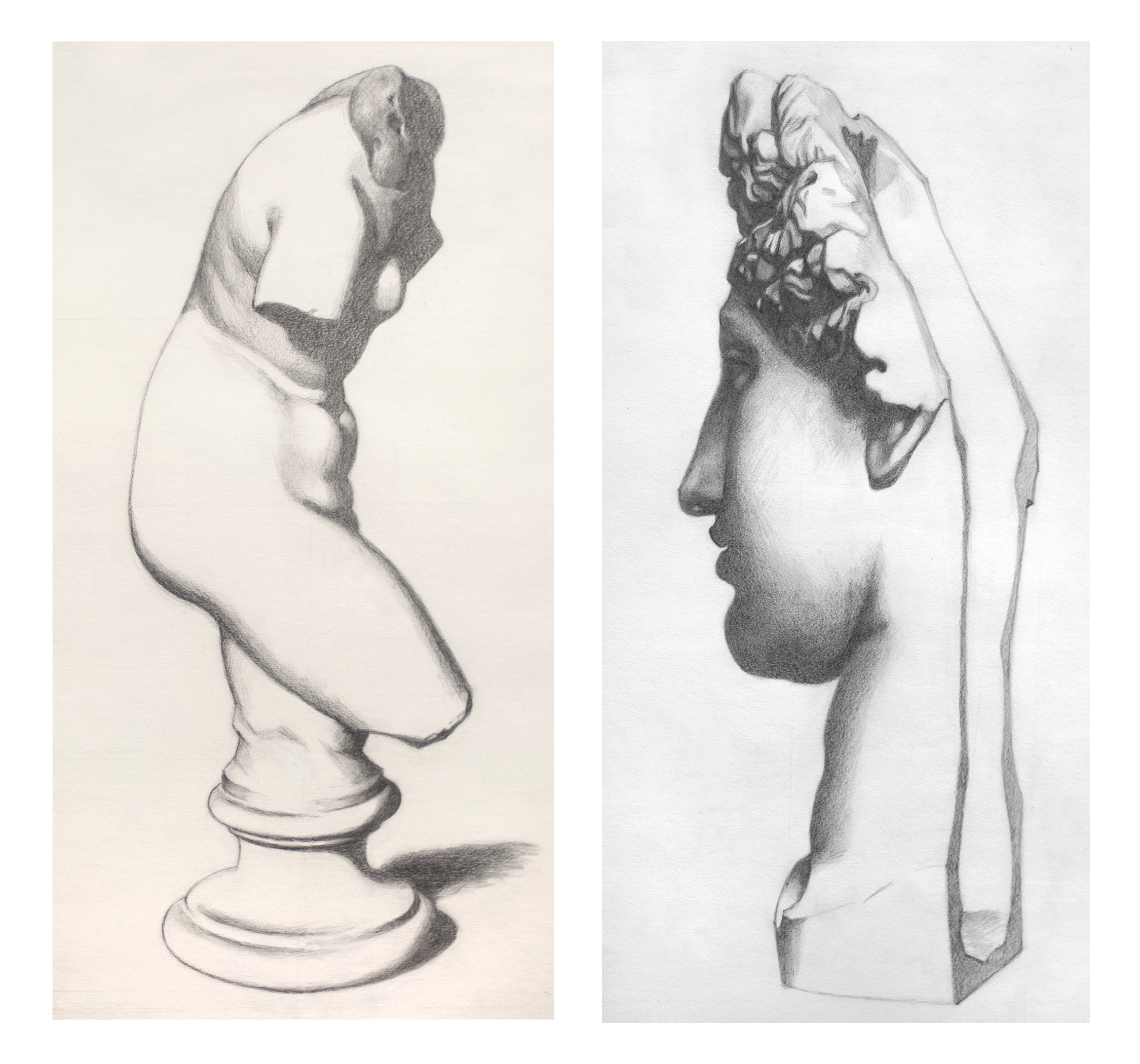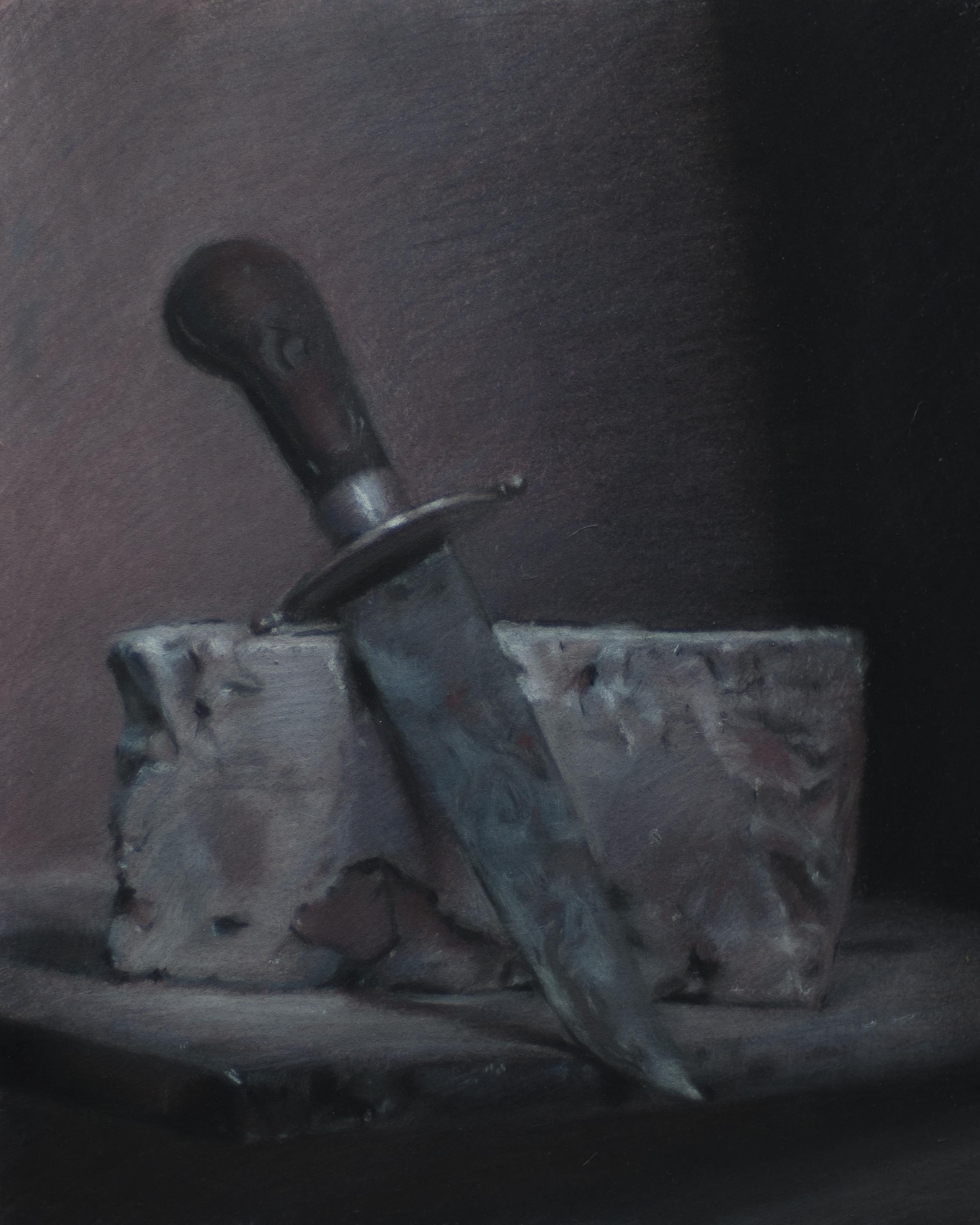curriculum
As digital mediums evolve, the core of creating artwork is still in traditional, academic ateliers. Before entering any art-related career, students should have a full grasp of drawing and painting of both still life and figure drawing. Students should have training in an objective, academic setting that not only surrounds them with like-minded ambitious peers, but also allows for the instructor’s critical feedback for improvement. AtelierEftimov offers a timeline of instruction such that a focused and committed student can fully expect to have a firm handle on the entire spectrum of classical art education.
AtelierEftimov is a 4 yr program. Students meet up to work in a small group environment with space being very limited. The smaller class structure allows Grigor to give more individual attention. While overseeing and lecturing, Grigor works along side his students to demonstrate his approach and knowledge of materials. This sets the highest standard in terms of quality of work that can be produced.
The program can be broken up into 2 categories, figurative and cast/still-life. Students meet up twice a week to work on projects ranging from Bargue copies, cast or still-life and once a week to work on the long figure pose. Each session is approximately 6 hrs per day. A long figure pose lasts for 3 months, meeting at least once a week. Working from the figure can be broken down to morning session and afternoon sessions. All students, regardless of level, participate in gesture drawing. During the gesture drawing- comparative drawing is highly stressed and implemented. This starts before all long pose sessions and lasts for the duration of at least a half hr and can last as long as 3 hrs.
The materials needed at each stage of development will be covered prior to starting each project. Each individual student works at their own pace so that they can full-fill their potential at each stage of development.
1st Level
drawing- is THE foundation of great picture making and works of art. All students entering Atelier Eftimov are mandated to start with drawing regardless of past experience.
gesture drawing session
Copies and cast drawing- Beginning students are introduced to drawing by copying plates from Charles Bargue which are completed in graphite and drawn on Bristol paper. They are then moved to caste drawing using the site size method and completed with charcoal on Canson Mi-Teintes drawing paper.
bargue copies - graphite
charcoal caste drawing
comparative drawing process graphite
Figure- Beginning figure drawings are done in graphite using the comparative method . Charcoal drawings of the figure are done there after using the site-size method.
All beginning students will be expected to do many starts, so that they are familiar with a constructive procedure. This will not only be the universal language in the class room setting but- serve as a platform for all future project to built off of moving forward.
Students are expected to complete 2 Bargue copies, 2 charcoal cast and 2 figure drawings graphite/charcoal.
2nd Level
tonal drawing process
Toned drawing- In preparation to black and white painting, this exercise helps identify and breakdown complex values in larger masses, as well as further hones in on draftsmanship. Drawings rendered traditionally with chalk and charcoal on middle toned paper are used as means to bridge the gap between draftsmanship and painting. This application of drawing covers both the figure and cast/still life and is a pre-requisite to any future painting.
Black & white painting- With oil based paint students will learn to develop their impression of 3 dimensional forms. When first starting off, sketches are done with black and white paint so that one can be familiar with the medium and overcome any technical challenges ahead. Once they are at a familiar stage with the medium, students are expected to produce a full figure and cast/still-life on stretched linen using the best materials possible. During this stage of development students will need to be adamant in applying their prior drawing lessons to painting
black and white painting
3rd Level
Limited Palette
Complementary painting and drawing- Painting utilizing 2 complementary colors: burnt sienna and ultramarine with titanium white. Drawings are completed in similar manner with use of dry mediums such as pastel on toned paper. This also serves to supplement painting.
complementary painting
complementary drawing
With the use of a complementary palette, students can engage color through temperature and maintain focus of drawing and value relationships. It introduces a means of mixing and color organization in terms of hue, value and chroma and further stresses the importance of value and drawing over color. This is also a transition and is a pre-requisite into a traidic color palette.
Triadic limited palette - painting with 3 primary colors: alizarin crimson, ultramarine blue and cad yellow. Here the student will learn how to be economical with the medium forcing them to push the boundaries through color mixing and palette organization.
pastel
triadic palette
Pastel drawing - drawings completed with a dry medium on toned pastel paper. This is an effective exercise to supplement painting at any stage, it also helps those facing issues with seeing color without having to worry about the dexterity needed that comes with painting.
4th Level
full color palette
working on a still-life














